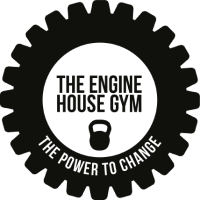Row, row, row your bar, one, two, three and four, if you see sparkly ✨ stars try not to hit the floor.
We jest, the bent over row will quickly become one of your go to best exercises for muscle growth, we promise! The barbell row is a wonderful compound exercise that targets your upper back, abs, biceps, lats, lower back and shoulders, so we thought it’d be a marvellous inclusion into our training tactics series.
Here’s the breakdown of how to do the correct technique and all the variations you can give a go whether you want to use a barbell, dumbbells or kettlebells to strengthen your back muscles effectively.
Setup & Movement
- Stand over the bar and grasp it with double overhand grip
- Retract your shoulders and engage your lats – this will also help take the tension out of the bar
- Pull the bar up towards your belly button as close as you can go
- Lower the bar back to the starting position with control
Benefits of the Bent Over Row
Upper Back Strength
Building a strong upper enhances your overall performance. A powerful back provides the stability needed for exercises like squats and deadlifts, while also serving as a solid foundation for horizontal presses such as the bench and dumbbell press.
It works your lats and traps effectively, and engages your forearm and biceps muscles, leading to a stronger grip. Moreover, the exercise also activates your core as it supports the bent-over position and maintains a rigid torso throughout the movement.
Helps with deadlift and other such pulling movements
When performing the bent-over barbell row, you maintain a hinged position throughout the movement. This engages your core, lower back muscles, hamstrings, and hips as you row the weights. Since these muscles are all active during a deadlift, doing the bent-over barbell row helps strengthen them in a position similar to the deadlift. In essence, this exercise enhances the stability and durability of the muscles required for deadlifts and other pulling movements.
Better posture & control
The bent-over barbell row strengthen the upper and lower back, but also reinforce proper spinal control, helping you resist lumbar flexion when handling heavy loads.
Muscles used
- Latissimus Dorsi (Back)
- Spinal Erectors (Lower Back)
- Hamstrings
- Scapular Stabilizers
Bent Over Row Variations
Dumbbell Bent-Over Row
When you use dumbbells instead of a barbell, you gain more control over your wrist movement (pronation/supination). This enables you to target various angles and muscles in your back and posterior shoulder. By doing so, you can address muscle imbalances and achieve a greater range of motion in the bent-over row. You can also choose to use one or two dumbells
Kettlebell Bent-Over Row
The same advantages as using dumbells, but as the weight is offset you’ll get a different feel to the exercise. Plus, gripping the handle on the bell is going to help your grip strength.
Pendlay Row
The same as the standard barbell row, but you rest the weight on the ground after each rep. This stops you using momentum during the lift making the exercise better for building strength when lifting from the ground. Great for beginners starting out with barbell rows to learn proper form (and also what Q demonstrates in the video)
Seal Row
For this one, you’ll lay face down on a bench while holding weights and performing supported rows. This reduces stress on the lower back and hamstrings, making it an fabulous way to isolate the back muscles.
Chest-Supported Row
Need to reduce strain on your hamstrings, lower back, and overall body during back training? Then this one’s for you. Set up your bench to an inclined position and sit on it in reverse so you’re facing the back. Lie on the bench with your legs stretched out behind you. Pick up your dumbells with a neutral grip and keep your chest up and proud. Pull the dumbells towards your hips, arms at 90 degree angles and squeeze your shoulder blades together.
Get 2 weeks free!
Sitting on the fence about signing up? We get it – we wouldn’t want to buy before we try either! That’s why we offer a 2 week free trial so you can come along and see what we’re all about.

